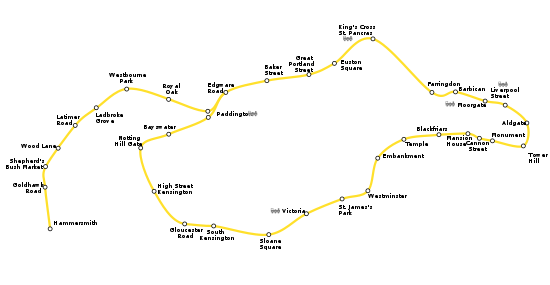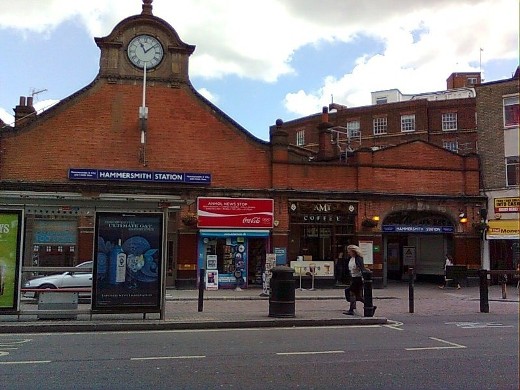
Hammersmith station, Hammersmith & City and Circle lines. The Piccadilly and District lines run from a separate station over the road.
|

The entrance to the station is on the right hand end of the building.
|
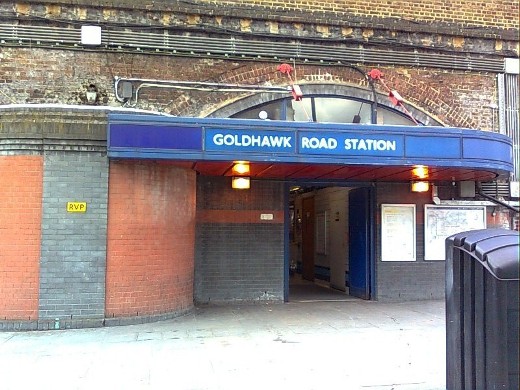
Goldhawk Road station opened in 1914, long after the line itself was in use.
|
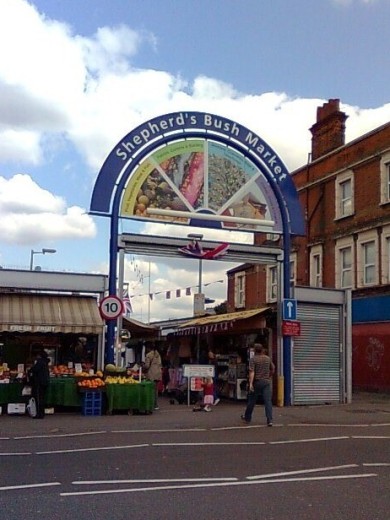
The walk to the next station takes us through Shepherd's Bush Market which runs alongside the tube line and consists of a single line of stalls either side of a central path.
|
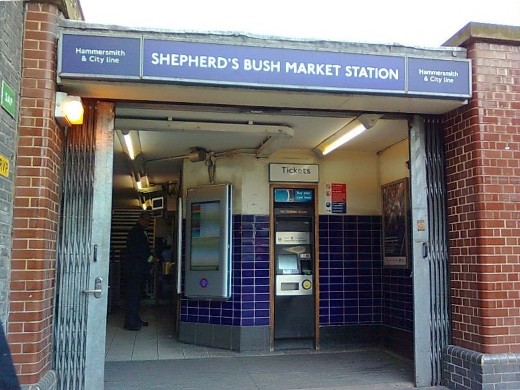
Shepherd's Bush Market station which was called simply Shepherd's Bush until 2008. The renaming of the station ended 108 years of confusion with there being two stations with the same name 500 yards apart.
|
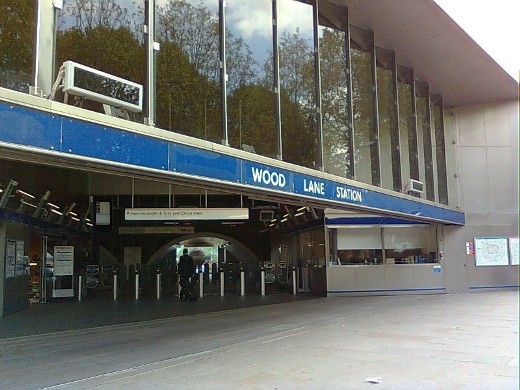
Wood Lane station was opened in 2008 in order to serve the new Westfield shopping centre. The station was given the name of a disused station on the Central line which was situated nearby and closed in 1947.
|
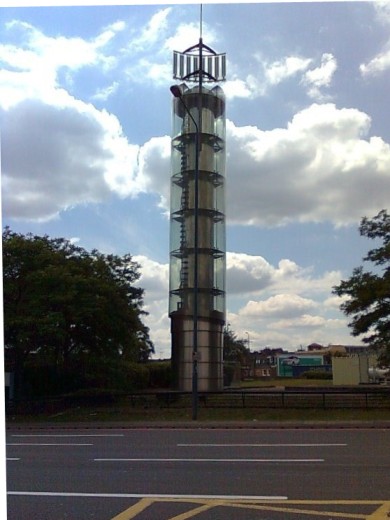
The way to the next station is barred by the West Cross Route which was formerly the M41, so we must walk well away from the Tube track. The nearest place to cross the road is at the Holland Park roundabout upon which stands the Thames Water Tower shown here. It is a large barometer, sadly no longer working but which used to hold blue water which rose as the atmospheric pressure rose so indicating good weather.
|
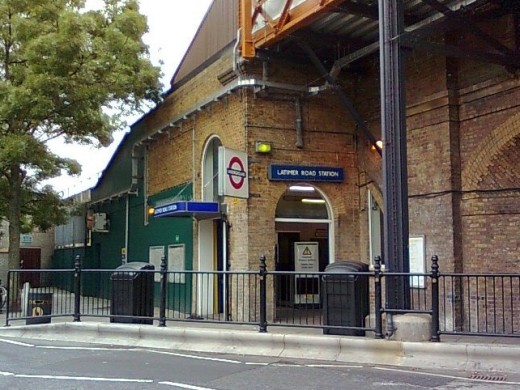
Latimer Road station.
|
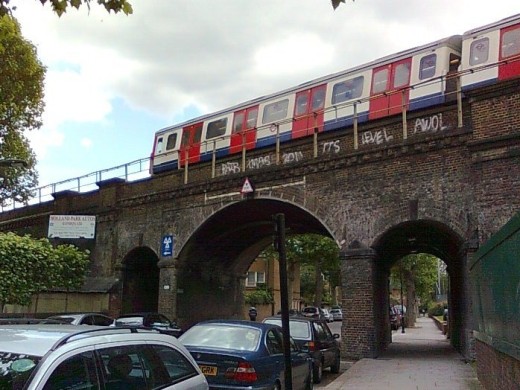
On the way to the next station, a Tube train rumbling above us on the bridge reminds us that the previous four stations along with the next one have platforms at this raised level.
|
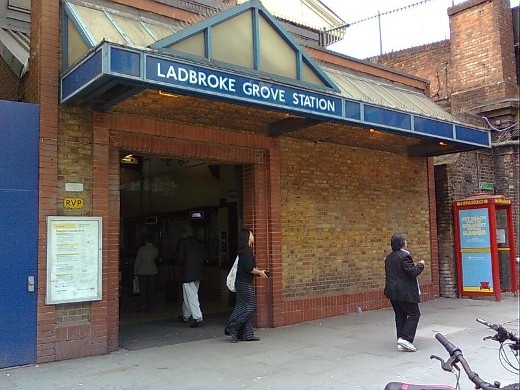
Ladbroke Grove station. The roundels on the platforms include the words 'for Portobello Road' indicating that it's the nearest station to the famous Portobello Market.
|
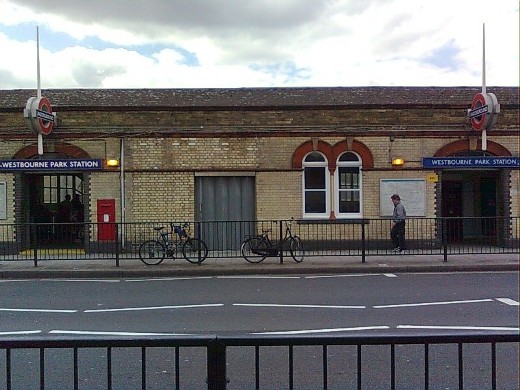
The double entrances of Westbourne Park station.
|
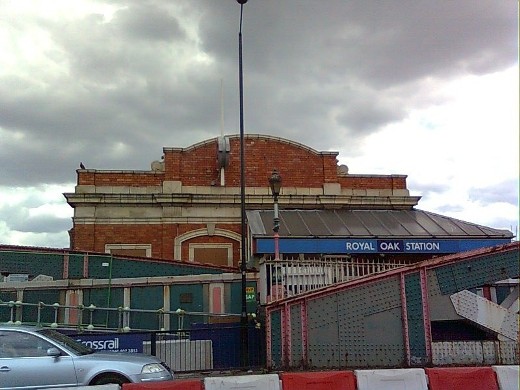
The very sorry looking Royal Oak station with the quaint building sitting on an ugly bridge.
|
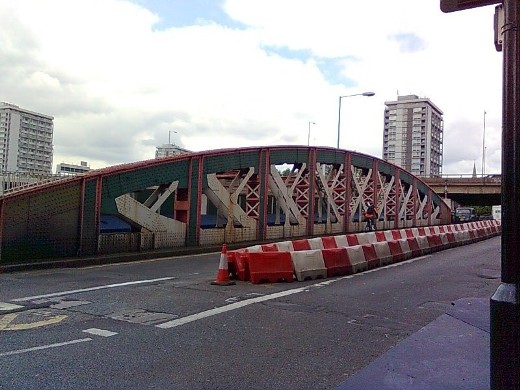
A better view of the bridge showing the metalwork construction.
|
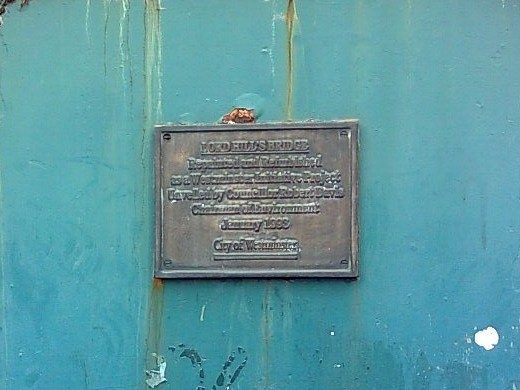
A plaque on the bridge tells us that it is called Lord Hill's Bridge and was refurbished and painted in 1993.
|
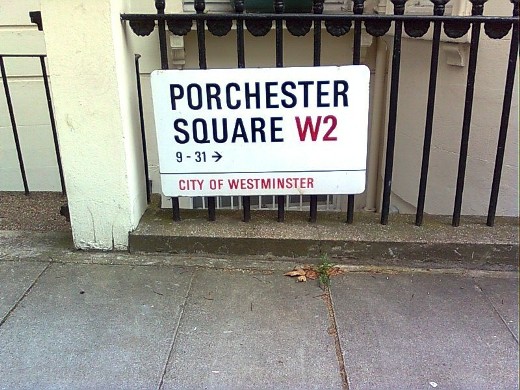
The walk to the next station takes us down a road confusingly named Porchester Square on one side ...
|
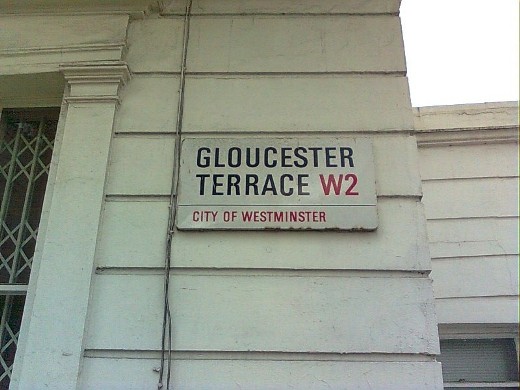
... and Gloucester Terrace on the other side.
|
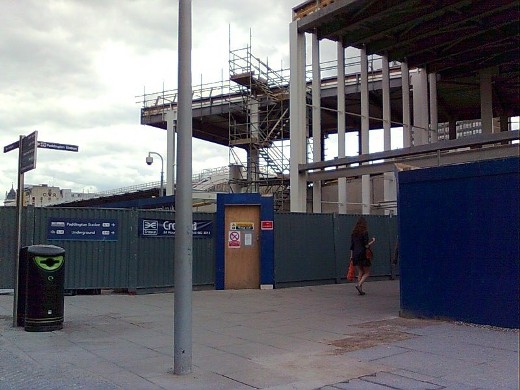
The north entrance to Paddington station with the entrance to the Hammersmith & City and Circle lines just inside. A separate station with entrance in Praed Street serves the Bakerloo and District lines along with the Circle line trains which return to Paddington having completed the circle.
|
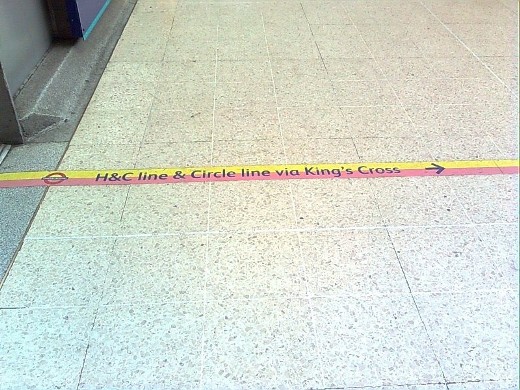
Coloured markings on platform 8 show the way from the main station entrance to platforms 15 and 16 for the Tube.
|
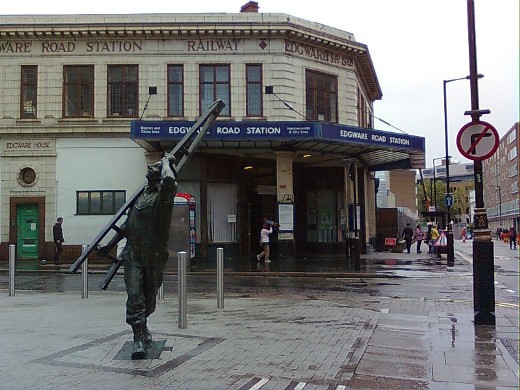
Edgware Road station not to be confused with the station of the same name on the Bakerloo line. The building, with its light coloured stone, is a typical Charles W Clark design. There are several more between Edgware Road and Farringdon. The statue is a work by Allan Sly called the Window Cleaner. He is looking up at the windows in the tall Capital House.
|
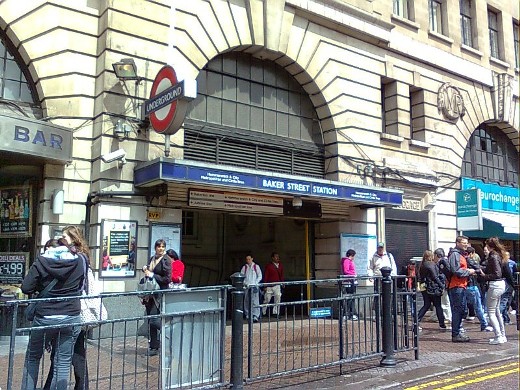
The entrance to Baker Street station in the building that was once the headquarters of the Metropolitan Railway.
|
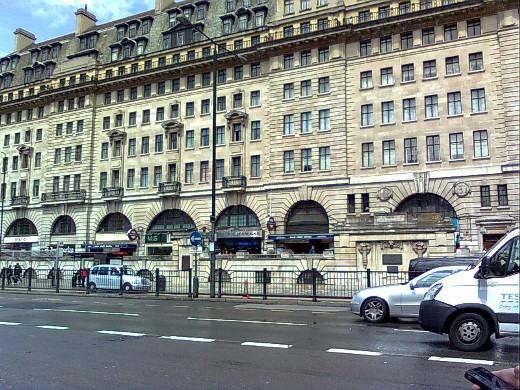
Showing more of Chiltern Court, the old station building. It was the most luxurious apartment block in London when it opened in 1929, with the residents having direct access to the platforms below. They also had access to an exclusive restaurant which is now a Wetherspoons pub, the ceiling of which is very ornate and still decorated with stucco crests of the Metropolitan Railway.
|
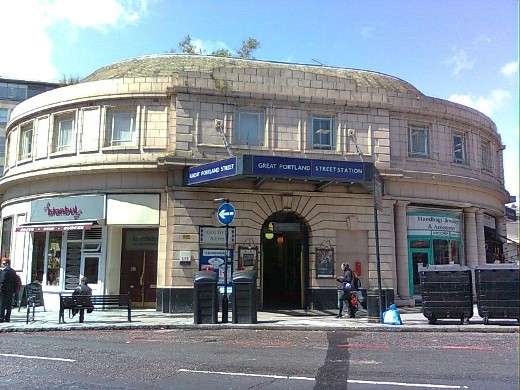
Great Portland Street station was called Portland Road when it opened in 1863 and the name changed in 1917.
|
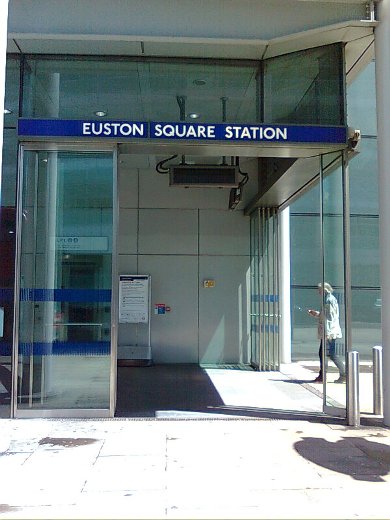
The modern entrance to Euston Square station in the corner of the Wellcome Trust building. Opened in 1863, the station was named Gower Street, changing to its present name in 1909.
|
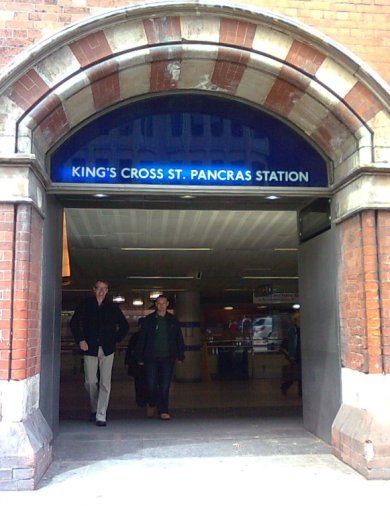
One of the many entrances to King's Cross St Pancras, the biggest interchange station on the London Underground serving six Tube lines as well as two National Rail stations. The first Underground station at King's Cross opened in 1863 and has been rearranged several times since. The most recent upgrade to the Tube station was completed in 2010 with new ticket halls and 300 metres of new passageways being constructed.
|

The beautiful Farringdon station building. In 1863, Farringdon Street station was opened a short distance away as the terminus of the original Metropolitan Railway and was relocated to its present position in 1865. It was renamed Farringdon & High Holborn in 1922, the name can still be seen on the facade today. The name was changed to Farringdon in 1936.
|
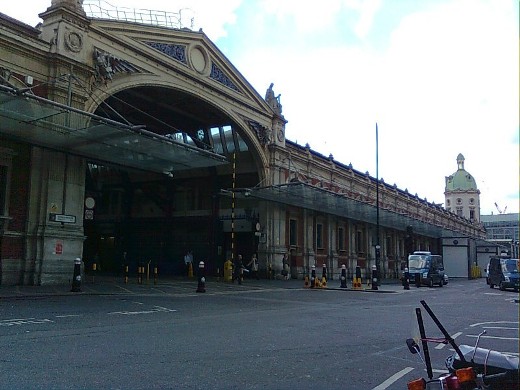
Just beyond Farringdon station stands Smithfield Market properly named London Central Markets, the largest wholesale meat market in the country open since 1868. The picture shows the central arcade Grand Avenue on the left with market space on the right.
|
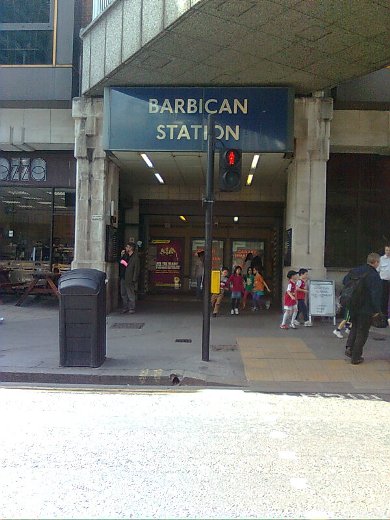
Barbican station was originally called Aldersgate Street, changed to Aldersgate, then Aldersgate and Barbican, and finally to its present name in 1968. The entrance is through a modern building to an older footbridge leading to the eastern end of the platforms. From the other end of the platforms, the western side, can be seen the beginning of the tunnels going under Smithfield Market where at one time livestock were unloaded from trains.
|
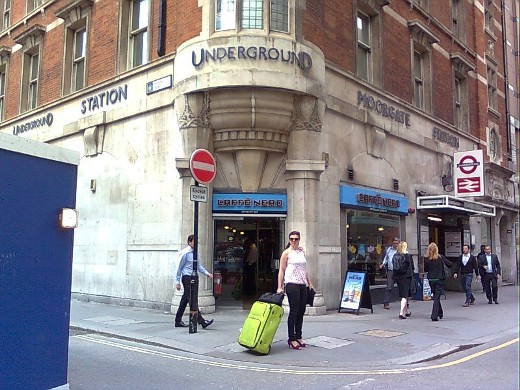
One of the entrances to Moorgate station, formerly Moorgate Street station. Below, hidden away, amongst a number of disused tunnels and subways, is a Greathead shield still embedded in the walls of a tunnel it was carving out when the building of an extension to Lothbury was abandoned in 1903.
|
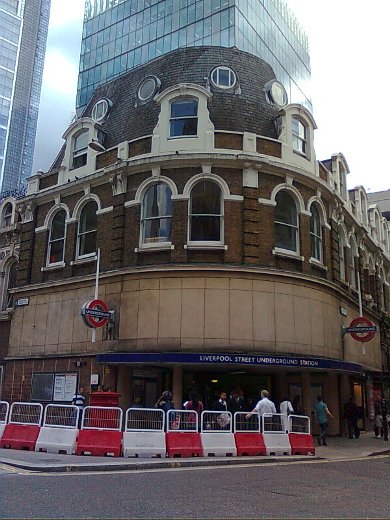
Liverpool Street station, separate from the mainline station over the road, although the Tube can also be accessed from the mainline station concourse.
|
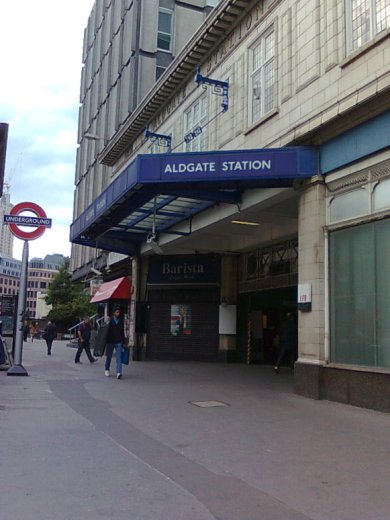
Aldgate station which opened in 1876. The picture shows the front awning which is supported from above by cables anchored by two attractive art deco style brackets.
|
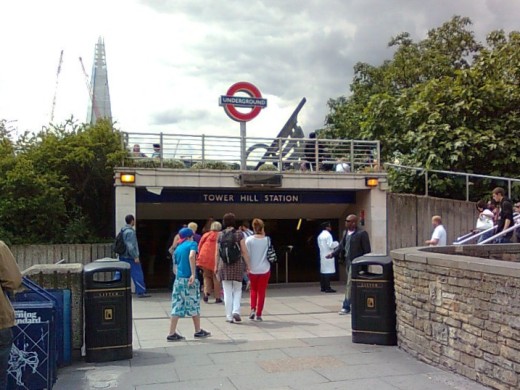
Tower Hill station opened in 1967, built on the site of the former Tower of London station which was only open for two years and closed in 1884.
|
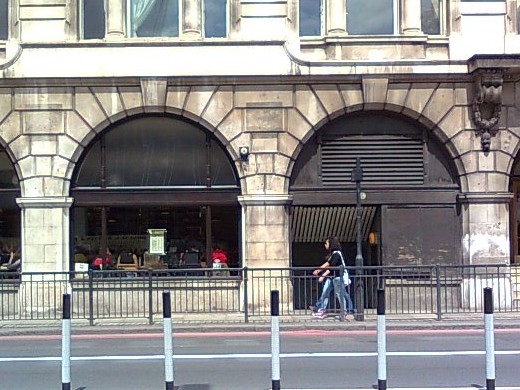
Just west of Tower Hill station two archways that were originally the entrance to Mark Lane station which was opened in 1884 and renamed Tower Hill in 1946. The archway on the right is still used as a subway under the road.
|
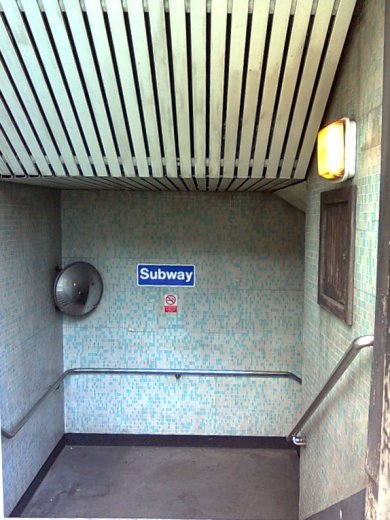
The entrance to the subway.
|
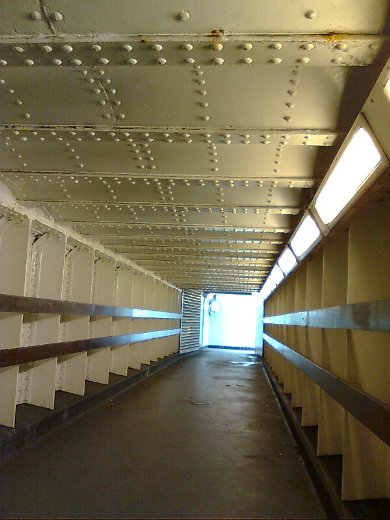
In the subway under the road.
|
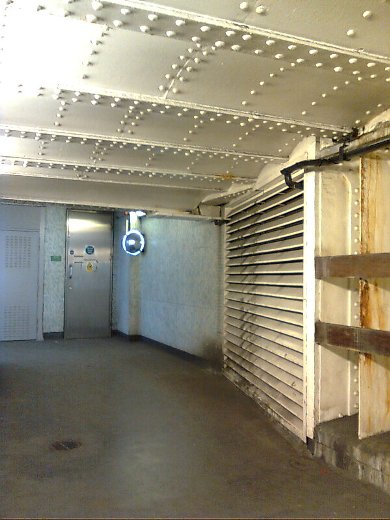
On the right, one of the grilles covering the stairway down to the old platform. The trains can clearly be heard just the other side of the grille.
|
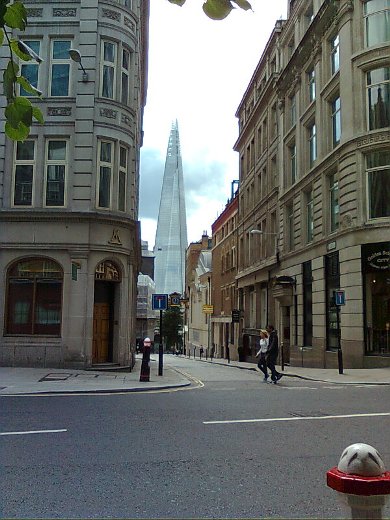
On the way to the next station, London's newest addition to the skyline, The Shard, can be seen down a side street.
|
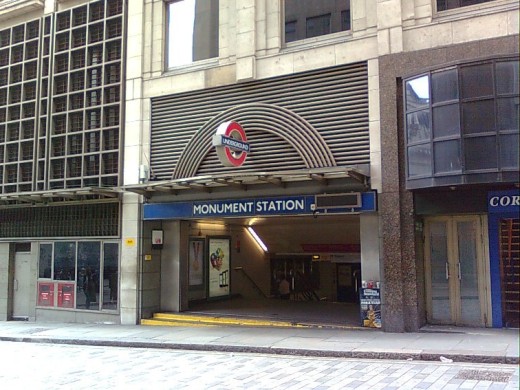
Monument station was opened in 1884 as Eastcheap and the name changed to Monument just a month later. The station has been interlinked under ground with Bank station since 1933.
|
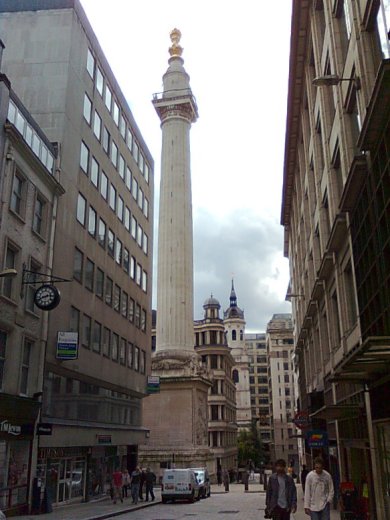
The Monument to the Great Fire of London of 1666 from which the station takes its name. The station entrance can just be seen on the right of the picture. The Monument is 202 feet tall and stands 202 feet from the site where the fire started. It comprises a fluted column of Portland stone topped with a gilded urn of fire. A winding staircase of 311 steps goes up to a balcony near the top. Sadly more people have died jumping off the monument than died in the fire it commemorates.
|
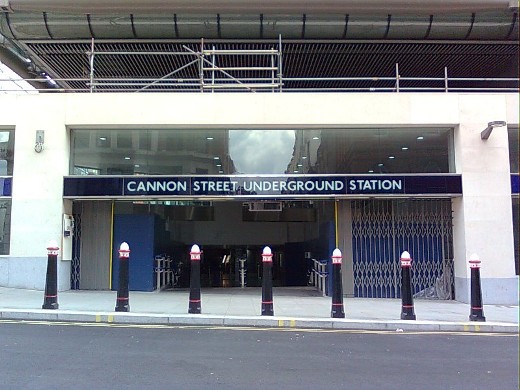
Newly modernised Cannon Street station entrance. The station itself is situated below the mainline station and is open for limited hours only.
|
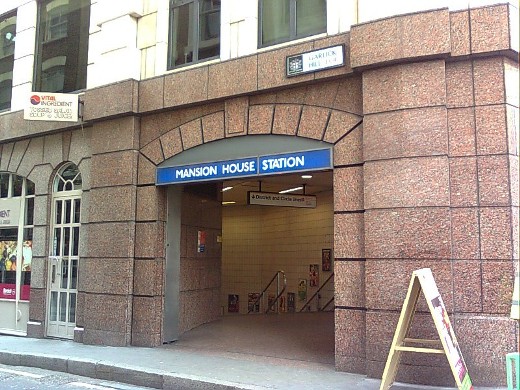
Mansion House station opened in 1871. The station entrance has been rebuilt several times.
|
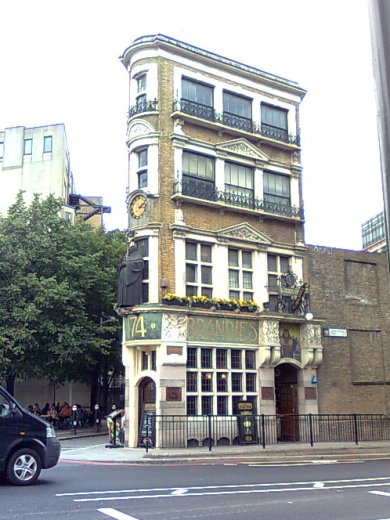
On the corner before Blackfriars station proudly sits the Black Friar on the pub of the same name. The building is Grade II* listed.
|
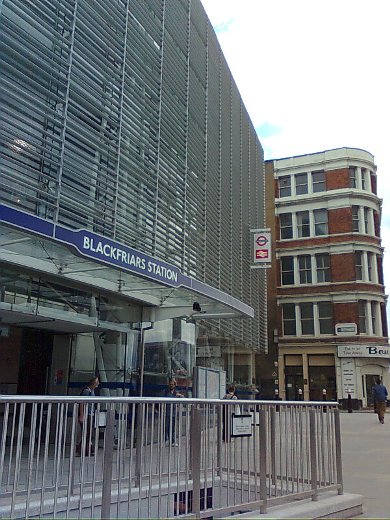
The modern Blackfriars station entrance. The Underground station opened in 1870, 16 years before the mainline station. The mainline station has recently been rebuilt with platforms spanning the Thames and with station entrances on both the north and south banks.
|
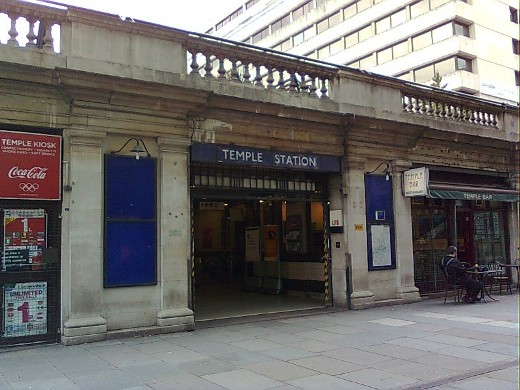
Temple station originally called The Temple with the definite article soon being dropped.
|
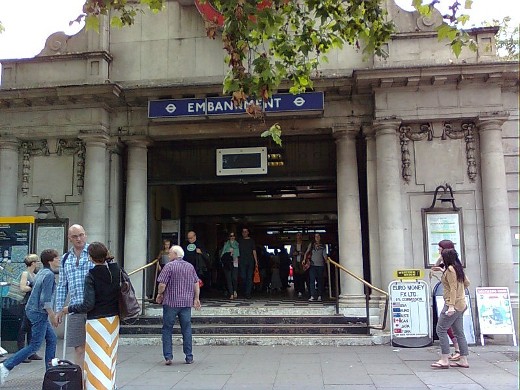
The walk to Embankment station takes us past Waterloo Bridge. The station, which was at one time called Charing Cross, is in two parts with deep platforms for the Bakerloo and Northern lines and subsurface platforms serving the Circle and District lines.
|
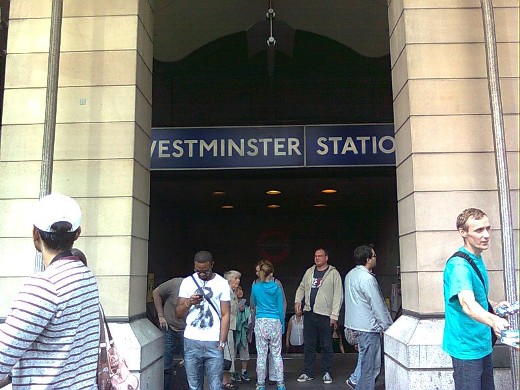
Westminster station is also in two parts with subsurface platforms opened in 1868 for the Circle and District lines, and deep level platforms opened in 1999 as part of the Jubilee line extension from Green Park to Stratford.
|
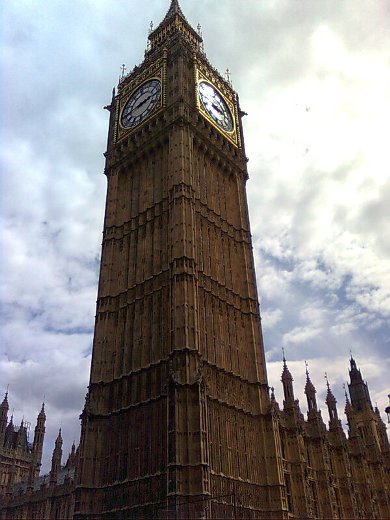
Over the road from the station stands Big Ben.
|
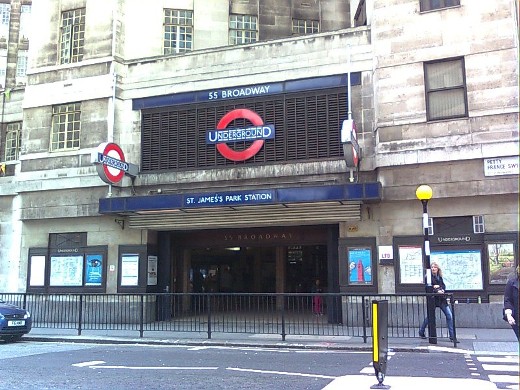
St James's Park station above which are the London Underground company offices. The name of the station has changed slightly over the years. In early maps it is written St James' Park while in maps from the 1930s it is St James Park, and in the 1950s the apostrophe was brought back and another 's' added giving the name we know today.
|

One roundel on the eastbound platform still reads St James' Park using the old spelling.
|
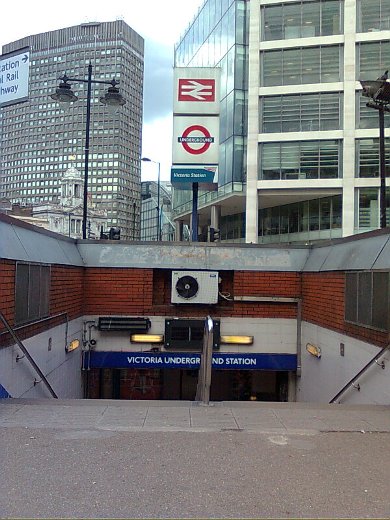
Victoria is the second busiest station on the Underground system after Waterloo. It consists of two stations connected by a pedestrian passage beneath the bus station. One side serves the Circle and District lines, while the deeper, newer station serves the Victoria line.
|
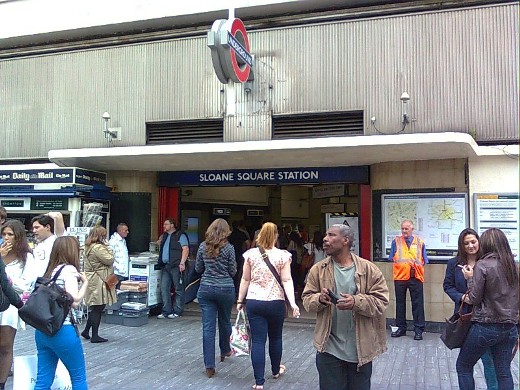
Sloane Square station opened in 1868.
|
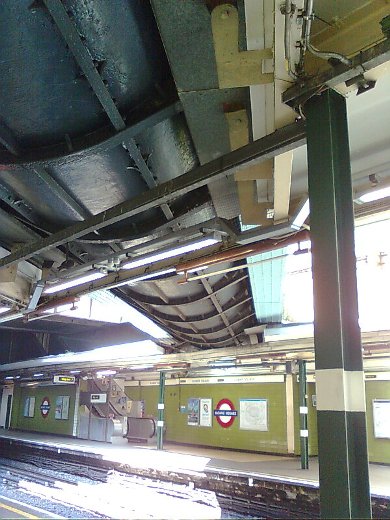
When Sloane Square station was built it was crossed by the River Westbourne which was also the source of the Serpentine in Hyde Park. At the station this large pipe was hung over the platforms to carry the river across.
|
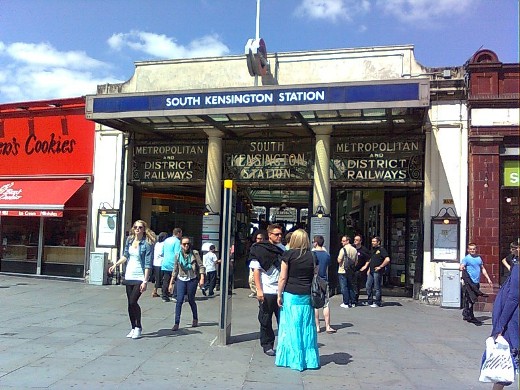
South Kensington station, opened in 1868. The building next door that can just be seen on the right of the picture is a Leslie Green station building, built for the deep level Piccadilly line in 1906.
|
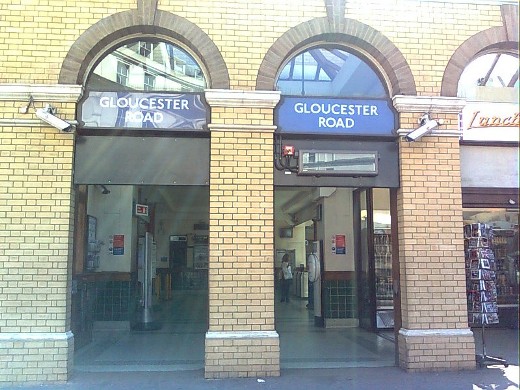
The modern Gloucester Road station entrance. The station was opened in 1868 as Brompton.
|
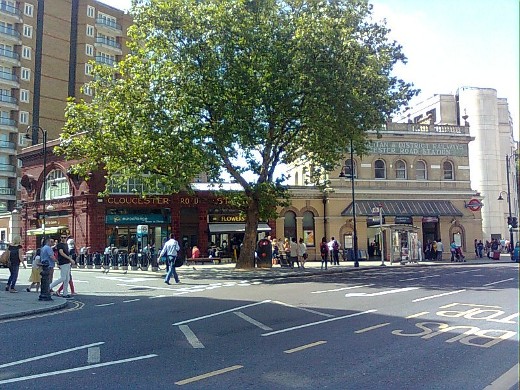
The picture shows two station buildings. The right hand building was the original 1868 building while the building on the left was added in 1906 as the entrance to the deep level Piccadilly line. It is now used for retail purposes.
|
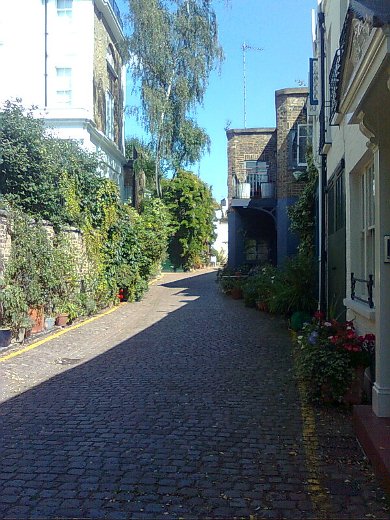
On the way to the next station, the beautiful, leafy Kynance Mews only open to pedestrians.
|
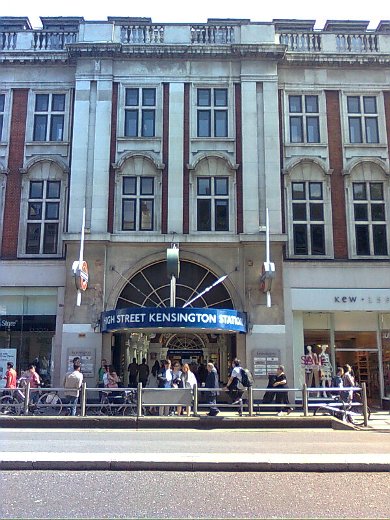
High Street Kensington station. The entrance to the platforms is inside the shopping centre.
|
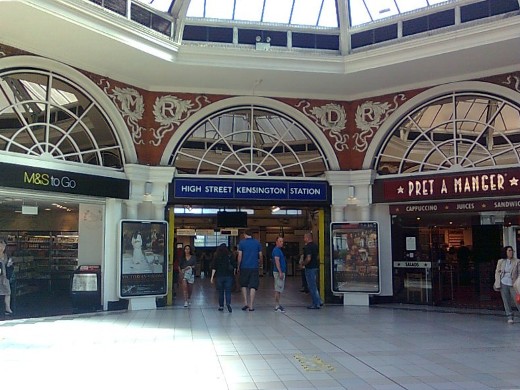
The entrance to the platforms inside the centre.
|
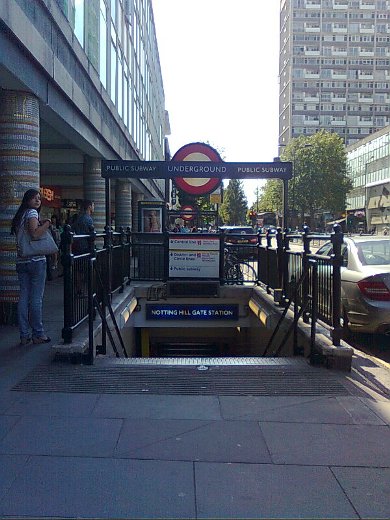
Notting Hill Gate station. The Circle and District line platforms were opened in 1868 and the Central line platforms in 1900. Entrances to the two sets of platforms were originally via separate station buildings on opposite sides of the street. After rebuilding in the 1950s when the two parts of the station were joined, subway entrances were built.
|
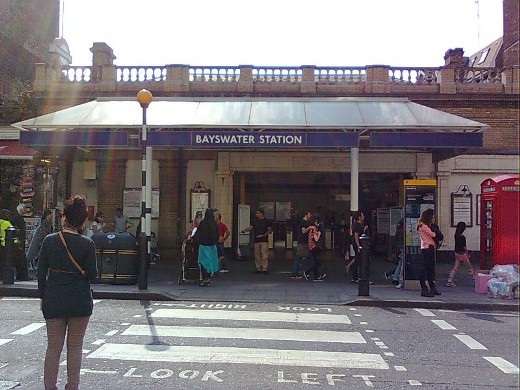
Bayswater station. Built by cut and cover, to the west of the platforms a section was left uncovered for ventilation purposes.
|
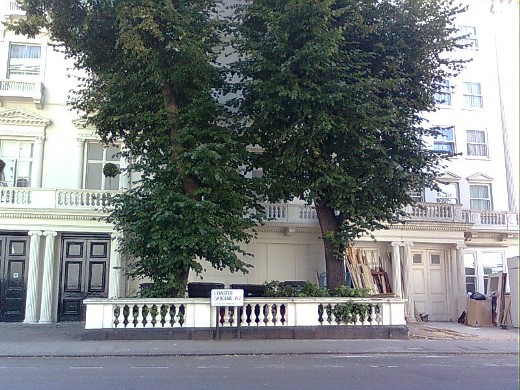
On the way to the next station, hidden behind the trees, numbers 23 and 24 Leinster Gardens, which were demolished to make way for the line. The fronts were reconstructed to restore the appearance of the terrace of houses.
|
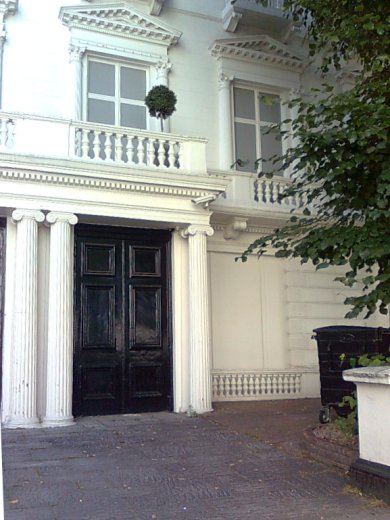
A close up of number 23 showing the false front door and painted windows.
|

Viewed from Porchester Terrace, the back of the two missing houses where the Tube line runs.
|
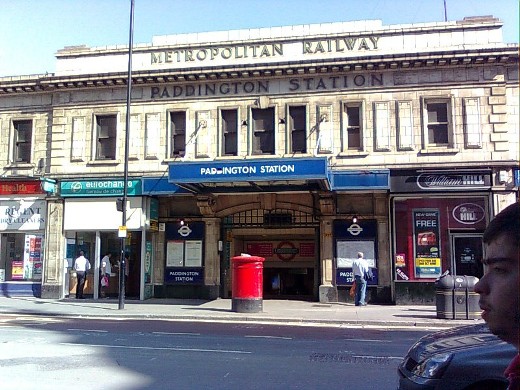
Paddington Station, close to but separate from the Paddington station served by the Circle line on its way from Hammersmith. Notice the post box facing towards the pavement. Later post boxes were turned towards the road to make collection by post van easier.
|
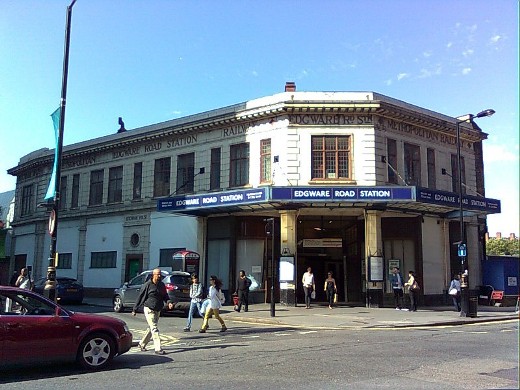
Edgware Road station. The Circle line terminus with the line visiting the station for a second time, this time calling at a different platform.
|
